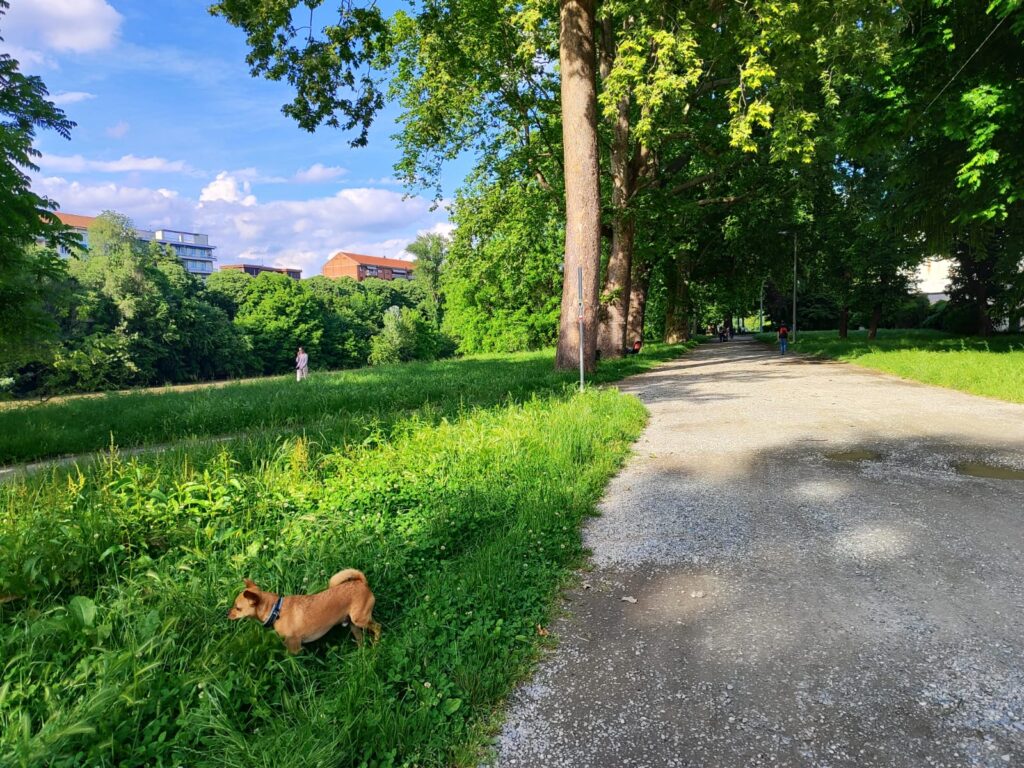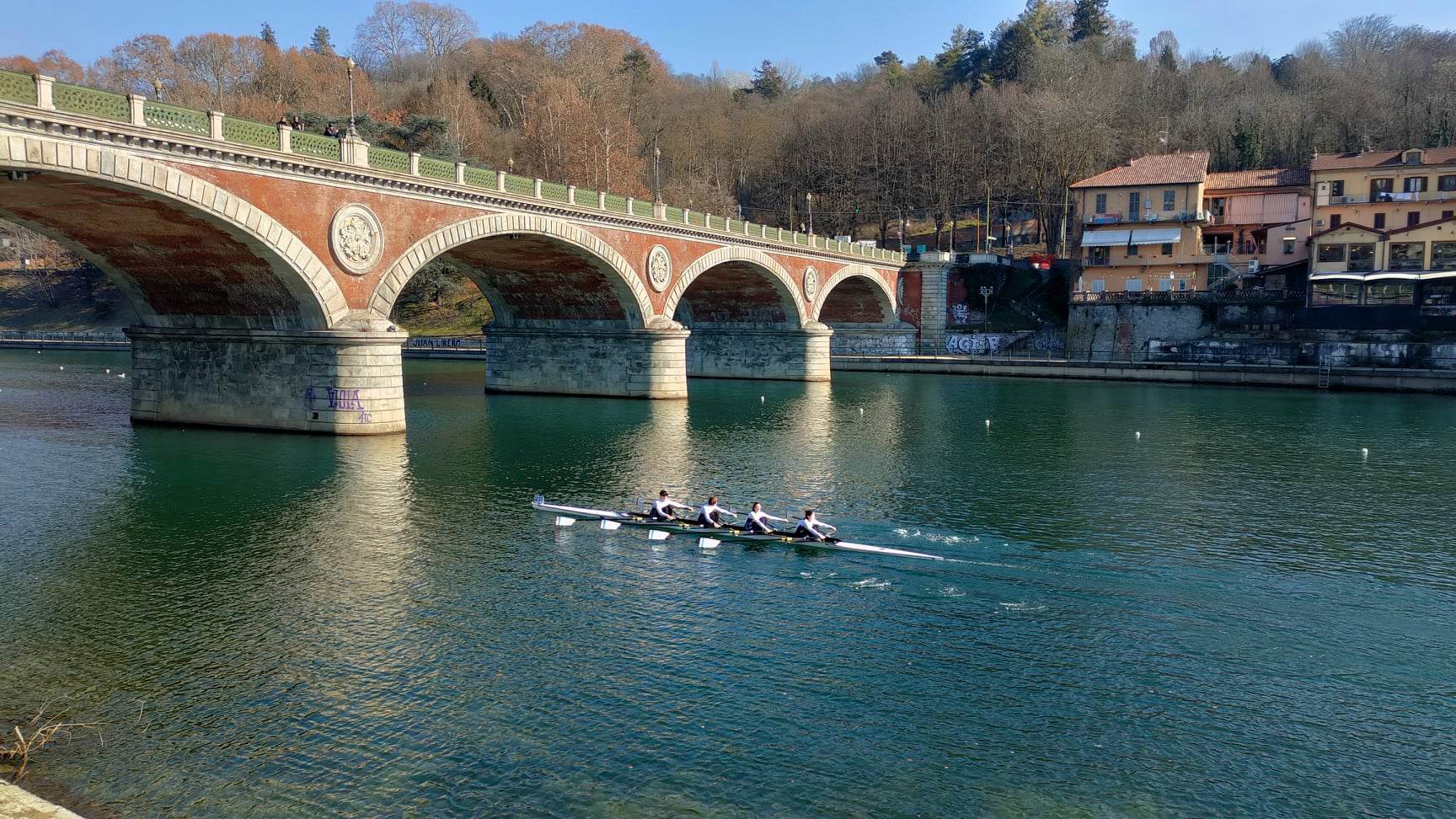So we ate and drank and ate some more, and we’ve filled our bags after shopping 2nd hand all around Turin – what now?
This guide is the collection of our favorite places in the city, excluding food and shopping.
City Center
The city center could get very crowded during the weekend, so if you want to have a more relaxed tour, we recommend exploring it during working days.
Palazzo Carignano
Via Accademia delle Scienze 5 (city center)
This building presents a magnificent use of masonry bricks in an artistic way. The older side of the building, a baroque styled palace from 1679, was home to the Carignano branch of the House of Savoy, and the newer part was the kingdom’s parliament from 1848, but after the unification of Italy (1861) they realized that it was too small to hold the meetings. Two years later (1863) the construction works to enlarge the parliament hall had begun. However, in the following year, the capital of Italy was officially moved to Firenze and this project was useless yet went on until completed in the year 1871, ten years since initiated.
This bureaucratic fiasco is well noted in the final result, and the building seems somewhat eclectic in its architectural style.
Circolo dei Lettori
In what was once Palazzo Graneri della Roccia, sits the Literary Society. They host a secretive café, Barney’s, known only to a few locals, yet it does appear on Google maps. The entrance is free, but you’ll have to type the secret key to enter, written near the entrance.
This place will give you a glance to the local bohemian scene, with an overwhelming atmosphere of a baroque palace, that was reconstructed after its severe destruction from WWII bombing.
Three Galleries
Galleria Subalpina
Galleria San Federico
Galleria Umberto I
The galleries trio of Turin is a classic tourist atraction. Passing through them, you travel two centuries back in time for a couple of moments. We ordered them according to their buty.

Panoramic Tour
This tour can follow the visit to the bizarre museums in the south of Valentino park, Criminal Anthropology, Fruit and Human Anatomy.
We recommend sparing a few relaxing hours for a complete tour of Parco Valentino from south to north and to continue beyond it, across the bridge and up the hill, to the best viewpoint over the city, down from there and along the Po river promenade to grab a snack, Merenda or Aperitivo depending on the hour of the day, in the Vanchiglia quarter.
After grabbing a tasty afternoon snack, to complete the panoramic tour, you can continue to the new stunning Campus Luigi Einaudi of the University of Turin. From you cross the pedestrian bridge over the Dora river, to the Aurora district, in a neighborhood named Reggio Parco, which only we refer to as “the island” as it is surrounded by water and main roads. A nice walk on the island promenade would bring you to the Esedra di Borgo Rossini, the real place to be and to be seen at in the afternoon, with cheap alcohol by the buckets. If drinking is not your thing, you can finish your trip in the Monumental Cemetery.
Valentino Park
Fontana dei 12 Mesi (San Salvario)
This would probably be the highlight of your visit to Turin, Italy’s 1st public park, since its inauguration in the year 1848.
In its most south point, you’ll find the magnificent 12 Months Fountain (Fontana dei 12 Mesi), which celebrates the human body.
The most notable part of the Valentino park is the medieval castle (Borgo Medievale). These replicas of monumental medieval architecture of Piedmont were constructed for the Italian Expo of the year 1884, to showcase the local royal family in front of their snobbish guests (even we were not invited).

Just above the castle is the rocky garden (Giardino Roccioso), comprised of streams that originate from natural springs that surround the park, small waterfalls, ponds, gardening compositions of beautiful exotic flowering plants and the artworks of the most talented artist in Turin – Rodolfo Marasciuolo.
Rodolfo‘s most famous work in this park is the “streetlamps in love on a bench” (Panchina degli innamorati), however we encourage you to look for all of his sometimes hidden sculptures around the park and in a few more gardens in the city.

You can read more about this great artist here (in Italian), and if you’re lucky you’ll meet him there in person, watering plants or feeding the nutrias.
Viewpoint
If you go from Valentino park across the bridge and up the hill you’ll reach the best viewpoint over the city, Chiesa di Santa Maria del Monte dei Cappuccini. The climb itself takes only about 10 minutes, but could feel an eternity if you are off shape.
It is recommended to go early morning on Sunday or national holidays, when there is less smog and a clear view up to the alps.

Po River Walk
For those who cannot or would not climb the hill to the viewpoint, a walk along the Po river is also a cool thing to do during the extreme summer heat, literally. Make sure to wear a hat against the scorching sun, and you are set to go.
Besides the amazing section of the Po river along Valentino park, we recommend exploring the rest of the riverbed walkable paths, starting from the 19th century promenade between the two main bridges of the city center, Ponte Umberto I and Ponte Vittorio Emanuele I.
Unless you plan to continue to the Mole Antonelliana, Turin’s symbol and the most touristic highlight, then you can cross the river to Grand Madre and continue Northward, crossing back on the next bridge and then further away along the shadowed unpaved path, passing along a few nice pedestrian bridges. There is no highlight in this walk, it is just the most Turinese thing to do in the hot summer.


Mole Antonelliana
The Mole Antonelliana, or as the locals refer to it simply as Mole, is the symbol of the city of Turin. It is an extraordinary building with a controversial past, which is debated up to this day.
In the year 1848, after the Jewish community in Italy just received equal civil rights at the beginning of the 19th century thanks to the city conquest by Napoleon Bonaparte, they requested from the king to build a proper synagogue in Turin. The king gave them a piece of land near the stables of the royal cavalry, and entrusted the planning to the architect Alessandro Antonelli, which was of Catholic origin, and had vast experience in planning Catholic churches, but of course none with synagogue planning.
This nomination created many conflicts with the Jewish community, as he basically planned another church instead of a Sephardic Jewish synagogue. Furthermore, the megalomanic plan tripled the original budget, and the Jewish community withdrew from funding the project in the year 1876, as it was not aligning with their needs.

Photo by: Giacomo Brogi, taken from BLDGBLOG.
The construction was completed only after half a century, and the son of the architect continued his father’s work, after the latter has deceased. The Mole Antonelliana is still these days the world’s tallest unreinforced brick building, at the staggering height of 167.5 meters (or 550 feet, if you have a foot fetish).
Monumental Cemetery
Inaugurated 200 years ago, this is a true place of morbid serenity, and a nice place to spend the afternoon, strolling between sculptures that commemorate, and in some cases even glorify, the dead.
Museums
We are not great fans of museums, but our friend Paola definitely is a museums’ enthusiast. She wrote a whole blog, Paola Everywhere, about her experience visiting all the unique museums of Turin.
Palazzo Madama
The Lady’s Palace was a nobile palace before the Savoy family achieved the royal status. The building is nice from outside, but to enjoy the front staircase, the spectacular view from the tower and the cute garden you should aquire the entrance ticket.
La Pista 500
Via Ermanno Fenoglietti 103 (Lingotto)
On the rooftop of Lingotto shopping mall hides Europe’s largest roof garden. Originally serving as a runway to test cars manufactured in the floors beneath it in the old Fiat car factory, today it is an oasis of tranquility and of natural beauty.
Museo Pietro Micca
Via Generale Guido Amoretti 7A
This is an ongoing heritage restoration project, entailing the story of the underground tunnels of Turin, running beneath the whole ancient part of the city center:
Museo Pietro Micca: discover the underground tunnels of the Citadel of Turin
Flashback Habitat
Corso Giovanni Lanza 75 (Grand Madre)
An artsy association which is a hub for changing exhibitions, shows and a lot of permanent artworks. Entrance is always free to members, but for some events non-members are requested a minimal donation to the association.
Lavazza Museum
The espresso machine was invented in Turin, and the Lavazza company immediately bought the exclusive patent rights. This was the beginning of the fast coffee culture, “espresso” in Italian. Explore the history of the coffee technology and industry from Lavazza’s point of view.
The Chocolate Museum
Via Paolo Sacchi 38 (Crocetta)
This museum is a omni-sensorial delight for cacao lovers.
Royal Tombs of Savoy
Putting aside our contempt for the Savoy royal family, one cannot overlook the significant artistic effort which still sits today under the Basilica of Superga, with all disrespect.
Museum of Criminal Anthropology
Via Pietro Giuria 15 (San Salvario, just in front of Parco Valentino)
Praising the absurdity of criminology in its early stages, this museum uncovers the innovative hypotheses originating out of the blue by Cesare Lombroso, ignoring the scientific method:
Museum of Criminal Anthropology in Turin: a Journey through Lombroso’s weird theories
Museum of Fruit
Via Pietro Giuria 15 (San Salvario, just in front of Parco Valentino)
This peculiar museum, the life project of Francesco Garnier Valetti, tells the history of the ancient fruits cultivated in Piedmont region:
Fruit Museum in Turin: a unique collection of hundreds of fake fruits
Museum of Human Anatomy
Corso Massimo d’Azeglio 52 (San Salvario, just in front of Parco Valentino)
Abandoned throughout the previous century, this museum is a standing example of how anatomy and Catholic Christianity were still entwined until the late 19th century:
The Museum of Human Anatomy in Turin: a journey through the scientific progress







Leave a Reply